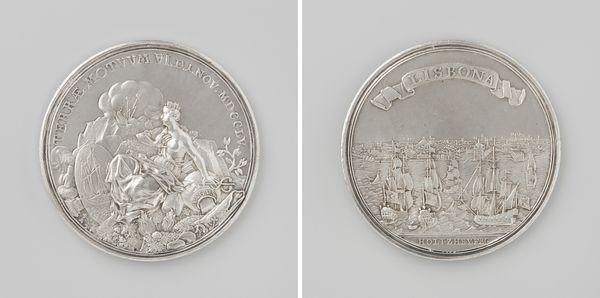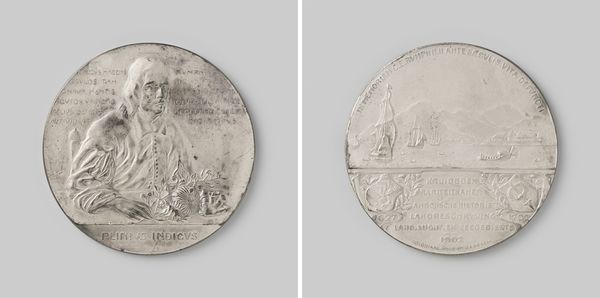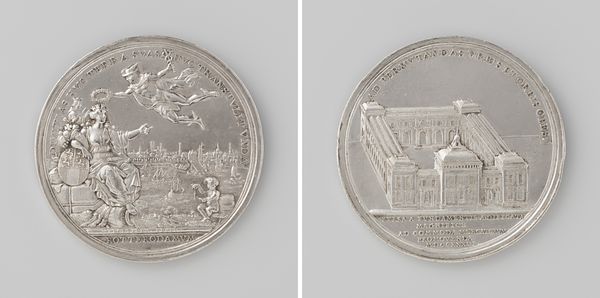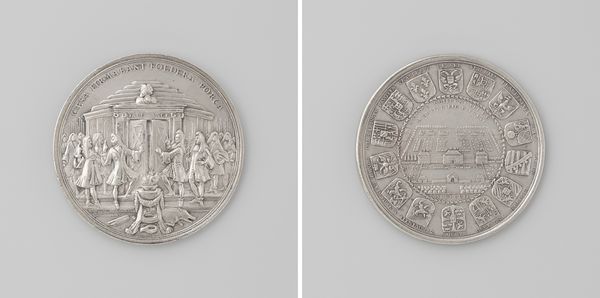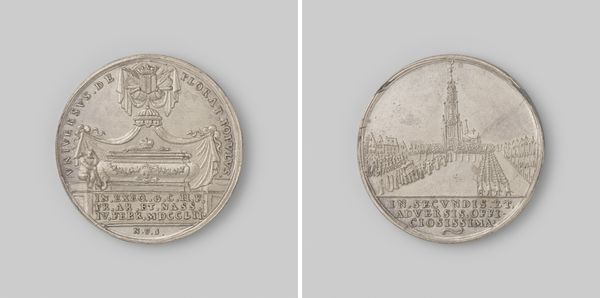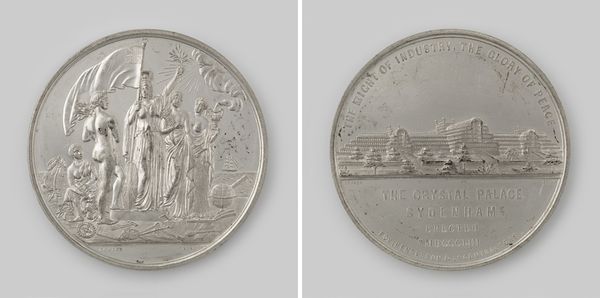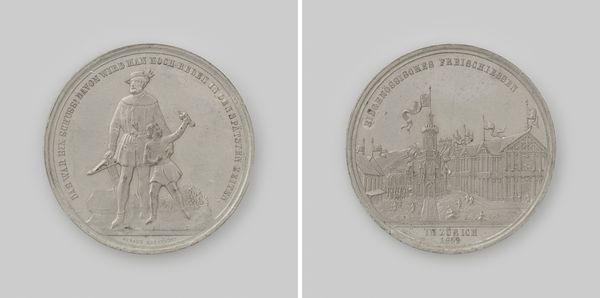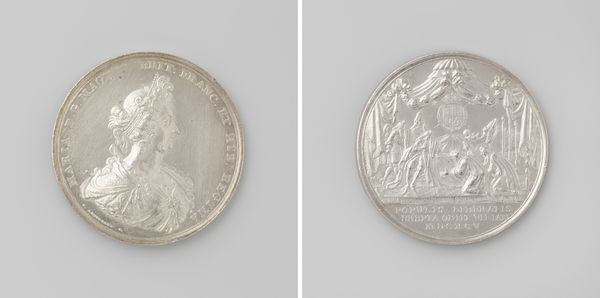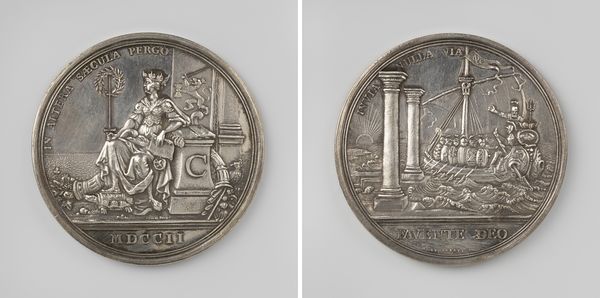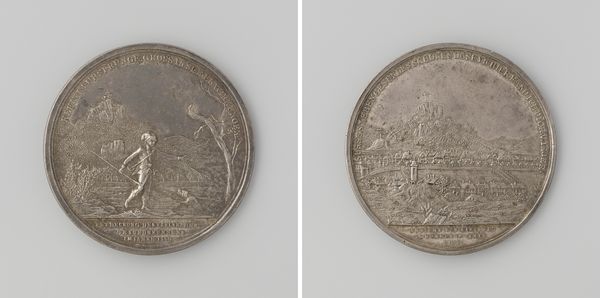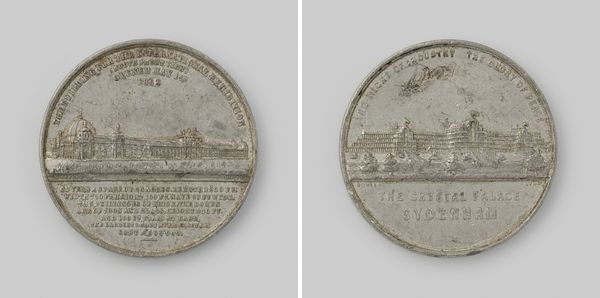
metal, relief, engraving
#
metal
#
relief
#
landscape
#
history-painting
#
engraving
Dimensions: diameter 9.9 cm, weight 117.68 cm
Copyright: Rijks Museum: Open Domain
Curator: This is "The February Flood of 1825" by G.F. Sartorius Jr., currently held in the Rijksmuseum collection. It's an engraving, and quite beautifully executed in relief on metal. Editor: The piece has a rather austere and solemn feel to it. It’s a powerful commemorative object, isn’t it? Almost like holding history in the palm of your hand. Curator: Exactly. It’s potent, serving as both a landscape piece and historical record, wouldn’t you say? Think about the engraving process—each line carefully etched into metal, then pressed. The labor involved elevates the depiction of this disaster, this tangible memento really places a certain amount of socio-economic value on the disaster. Editor: Indeed. The decision to depict this catastrophic flood on metal—perhaps silver?—speaks volumes about how the disaster impacted the cultural and institutional psyche of the Netherlands at the time. Disasters in metal work had lasting political meanings. The piece showcases not only the tragedy of the event, with flooding and the figures in need, but serves as a document reflecting its immediate reception, which then informs present receptions of this event, and its placement within a national narrative of resilience. Curator: Notice how one side depicts a monument rising from a flooded landscape? That imagery is really rich in symbolism; what are your thoughts on that? I feel it symbolizes this collective effort rising, emerging from devastation and that perhaps the monument and process speaks to consumption, since precious metals are finite in this respect. Editor: I agree; and the monument serves also to remind society of the necessity for resilience in the face of national tragedies; it encourages and cultivates that very resilience through collective memory. Look closely and observe all the figures in distress on the reverse. Curator: Yes, how social fabric shapes how a landscape might respond, how it might evolve or change. Editor: Precisely, the interplay between environment and political-cultural expression makes it very difficult to see it merely as documentation. Curator: It's incredible how material culture preserves social memory in this way, in all respects. It makes you think about value and destruction, about resilience but also the ephemerality of material value itself. Editor: It shows how political events can become ingrained, transformed, or made monumental across society and culture at large.
Comments
rijksmuseum about 2 years ago
⋮
Flood Disaster Medals. Much of the Netherlands lies below sea level. The threat of flooding is thus ever-present. Dikes, dams and polders were created to control the water. Still, these safety measures sometimes failed. Each century witnessed disastrous floods, with levees breaching and the countryside being inundated. The North Sea Flood of 1953 led to the construction of the Delta Works. Thanks to this major intervention the country has since remained dry.
Join the conversation
Join millions of artists and users on Artera today and experience the ultimate creative platform.

